Naxos is the largest and loftiest island in the Cycladic group, but even if your time is short, you can treat yourself to a kaleidoscope of engrossing spectacles, within close proximity to Naxos Town. The island is like a distilled version of the best of Grecian culture and island scenery, where abrupt ravines and hidden valleys give way to long, sandy beaches.
The island is deeply endowed with history and monuments, from classical temples and medieval monasteries to Byzantine churches and Venetian towers, in addition to a wealth of traditional crafts. I was genuinely staggered by the rich variety of encounters, woven together in a locally-operated cross-island day trip. www.NaxosBusTransfer.com
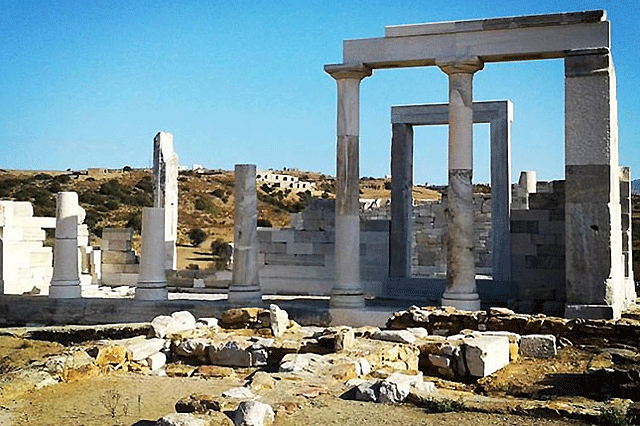
Introducing local guide, Irena, a twenty-something effervescent font of inspiration. She was an exceptionally engaging guide, who graphically brought her island’s stories to life with a natural, playful patter. Naxos is a seriously fecund food bowl, dramatically framed by the pyramid-shaped Mt. Zeus. Mythology says this is where the Greek God Zeus was raised as a child, in a cave dwelling. If you’re feeling extra-adventurous, it’s a three hour lung-buster to scale the summit.
Our first stop was in the lush, green valley of Gyroula Sangri to marvel at the all-marble Temple of Demeter. Constructed 540BC to worship the goddess Demeter (one of the 12 Gods of Mt Olympus), she was the protector of vegetation and farmers. The site was selected because of its high fertility and the temple pre-dates the Parthenon in Athens by a century.
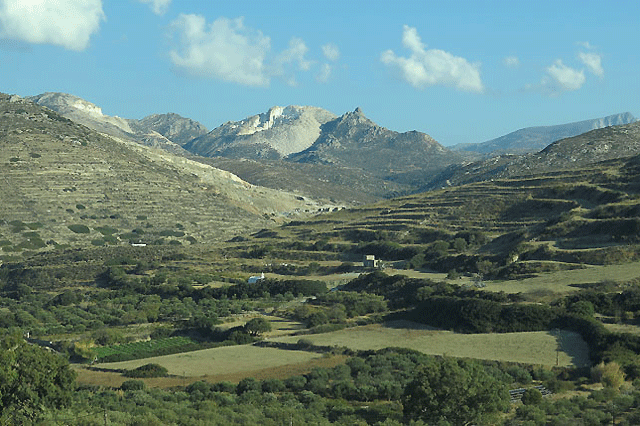
That was one of the great personal revelations Irena impressed upon me: Naxos has played a pivotal role in shaping ancient Greek architecture, particularly free-standing sculpture and early temples. Across the interior, our group spotted many of the 21 Venetian feudal towers still standing, from where the trading republic’s appointed lords would live. The Greeks call them “piyri”, and in Venetian times, a portion of the local agricultural production was also stored in these towers as a form of tax.
The towers were also battlements, with slits in the side to discharge weaponry. We called into a beautiful little hamlet, Damalas, which is home to a magnificent traditional family-owned pottery workshop (buy an olive oil jug) and also a traditional olive press dating from 1850, which is no longer in use. Delving deeper in to the hinterland, the bougainvillea-emblazoned village of Halki is where you’ll find the historic Vallindras kitron distillery, which pioneered production of the liqueur in 1896.
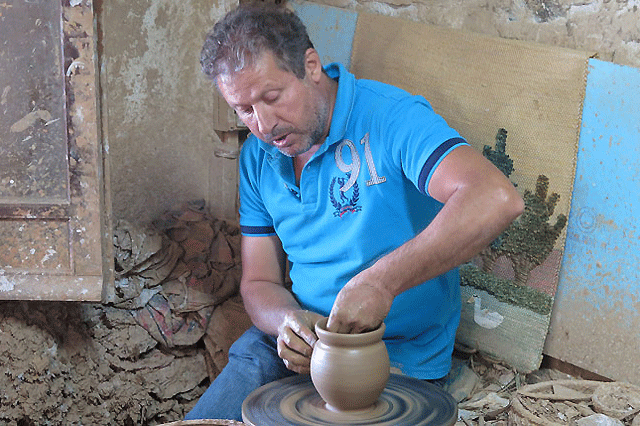
Kitron is made from the fruit and leaves of the citron tree – a close cousin of lemons, but stronger in taste. Produced in three different varieties – green, yellow and clear, I had great fun sampling the range for strength and sweetness.If you’re a fan of Italy’s citrus liqueur, limoncello, kitron should hit the spot, albeit somewhat stronger.
Halki exudes a timeless atmosphere, where smiling old men, dressed in their Sunday best and Zorba hats, sit down to play dominos and chew the fat, in the morning sun, at al-fresco tavernas. One delightful chap I chatted to told me he was 85, despite looking all of 70. Let’s hear it for the extra virgin olive oil – or maybe it’s the kitron? Naxos is certainly not short of churches.
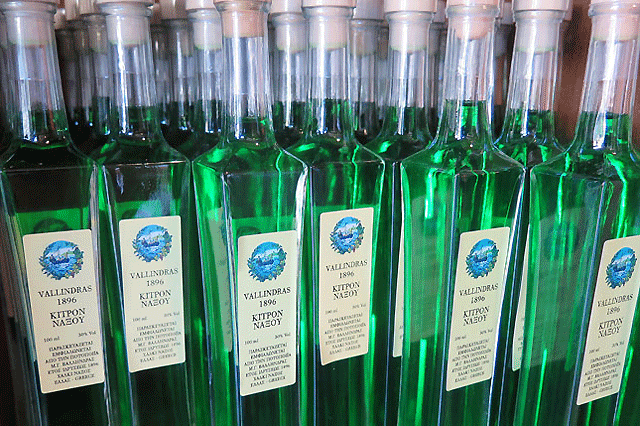
They speckle the landscape with such abundance, that there’s actually one church for every four residents! The best in show, for its staggering age, is the Byzantine church of Drosiani Mary. Originally built in the 4th century as a monastery, and progressively added to over the ages, it is an absolute jewel. Within the arched exterior, constructed from field stone, the colourful frescoes of biblical scenes and saints were painted on the walls 1500 years ago – it’s remarkable they have survived in such a relatively good state.
Clinging to the cliffs of a deep, green valley, we drove through one of the oldest mountainous villages of Naxos.This village once flourished due the mining of its rich deposits of emery. However, disaster struck in World War II. As Irena explained, because the village was incredibly remote and the steep slopes were infertile, 500 villagers died of starvation. The more you explore Naxos, the greater you realise how incredibly endowed the island is with marble.
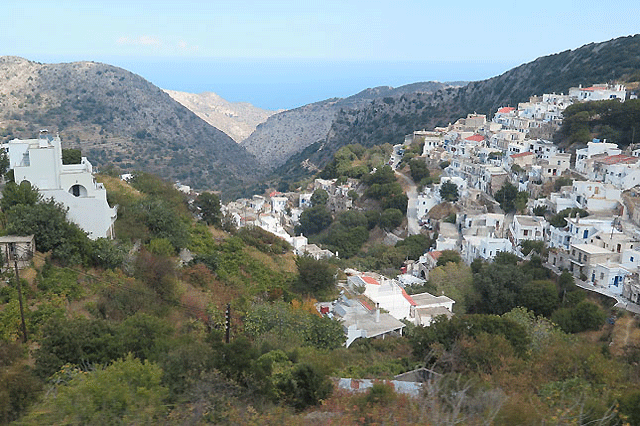
Irena remarked that 64% of the island’s geological structure is marble and it’s still heavily exported worldwide. Naxian marble was hauled to Athens to adorn the roof of the Parthenon, and it’s still highly sought after, because of its creamy colour and glistening crystal texture, underscoring its technical name, crystallina marble. The hillside village of Apeiranthos (also called Aperathos), set on the foothills of Mt. Fanari, is an unbelievable knock-out.
It’s informally called the Marble Village, because the buildings, shops, lanes and steps are all crafted out of the crystallina stone. This is literally a village where the streets are paved in marble. Originally settled by refugees from Crete a thousand years ago, many of the villagers still wear traditional attire and have their own dialect.
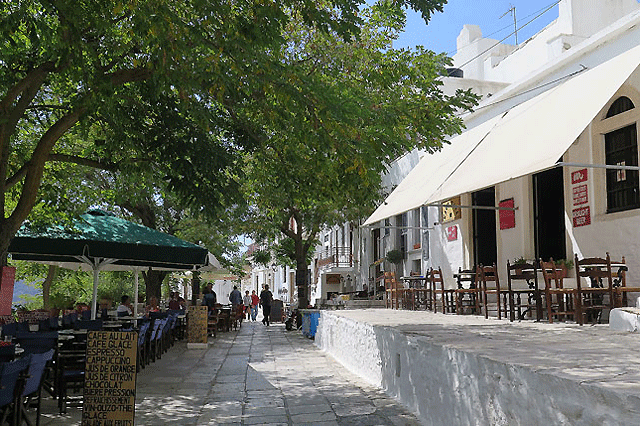
When farmers are cultivating the land, they will still regularly unearth age-old marble sculptures which are displayed in the local museum. Those style-conscious Venetians took a liking to the town and its marble make-up, so you’ll encounter hordes of two-storey townhouses alongside the traditional Greek sugar-cubes. The town itself is dotted with little squares edged in cafes and a tantalising labyrinth of tiny streets and alleyways, deliberately designed to thwart pirates and invaders.
You’ll notice the buildings at the end of a lane don’t have typical corners – they are falter and wider so that goods-laden donkeys could turn into the lane without damaging any of their haul. Locals were very superstitious in medieval times, so the street corners are also adorned with religious crosses to scare off the devil. Apeiranthos would have to rate as one of the Aegean’s most picturesque and evocative villages.
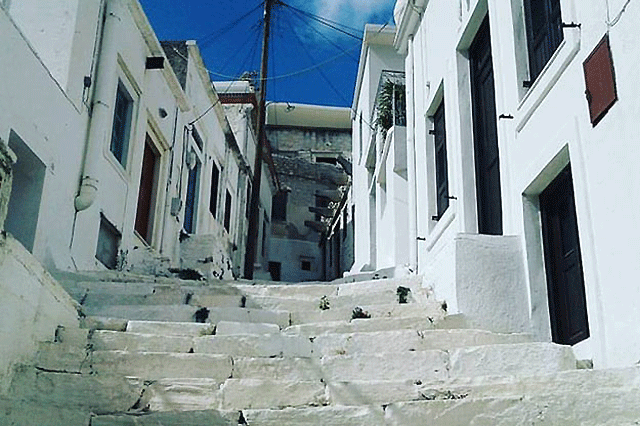
My final stop on the day-trip was in the beachside village of Apollonas, which is sheltered from the prevailing wind. What was once a sleepy fishing village has become the picture-perfect beach haunt on Naxos, thanks to its sweeping crescent of golden sand, fringed by a clutch of waterfront bars and fish tavernas. The entire village is resolutely Greek in design – with whitewashed cubist houses in blue trim, fanning across the slopes above the beach.
Just above Apollonas beach, a 10 metre long marble statue, with intricate carvings only half-finished, has been left to linger in this abandoned quarry. There are actually three of these abandoned statues across Naxos, but this is the big boy, chiselled in the 7th century BC.
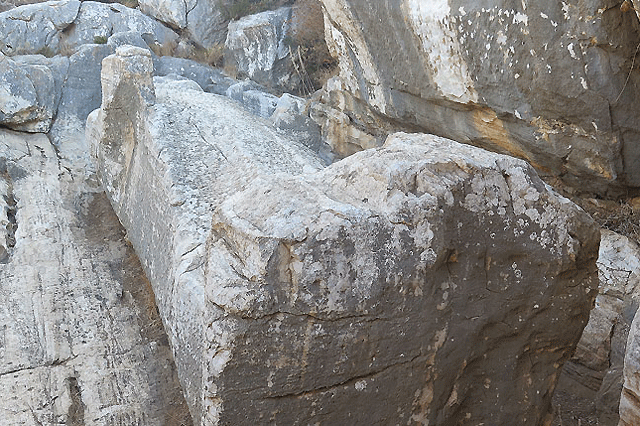
Kouros in Greek means colossal male statue and it’s believed this statue was meant to depict the Greek God, Dionysus. But why the quarry was abandoned and the masterpiece left unfinished, remains subject to debate. Some scholars believe it was due to cracking and the inability to transport the statue.
However an alternative theory is that the construction was cancelled or the order wasn’t paid for, so the sculptors downed tools. It’s an unresolved mystery for the ages.

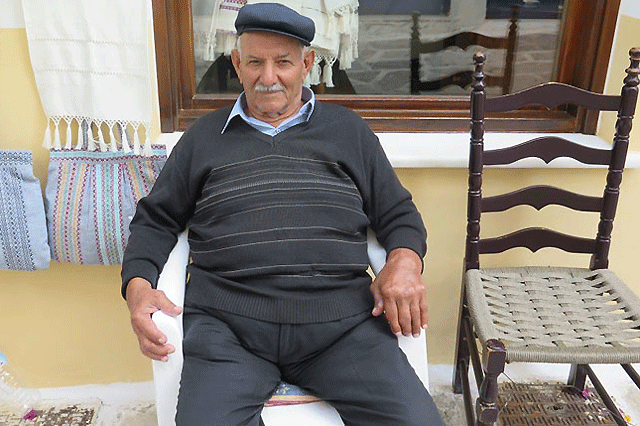



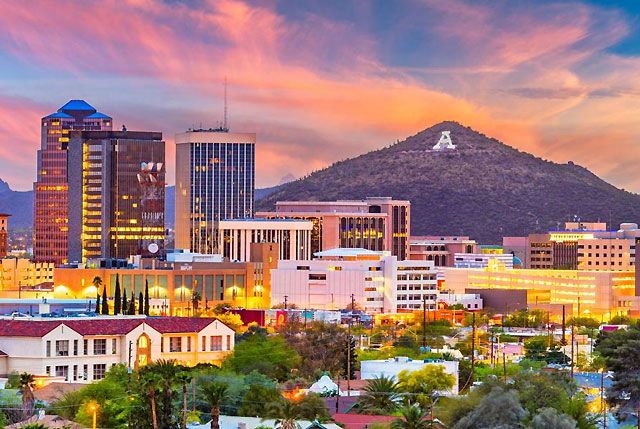

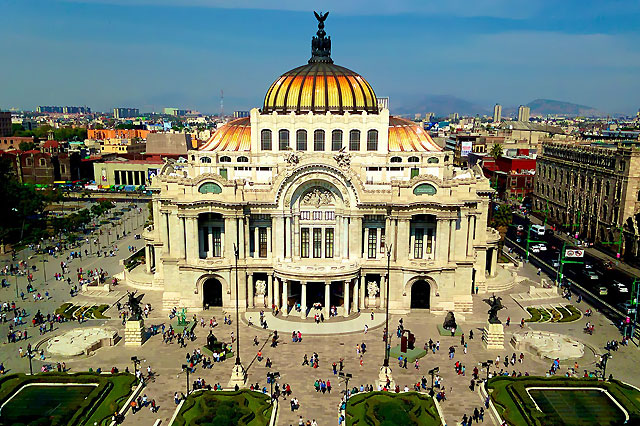
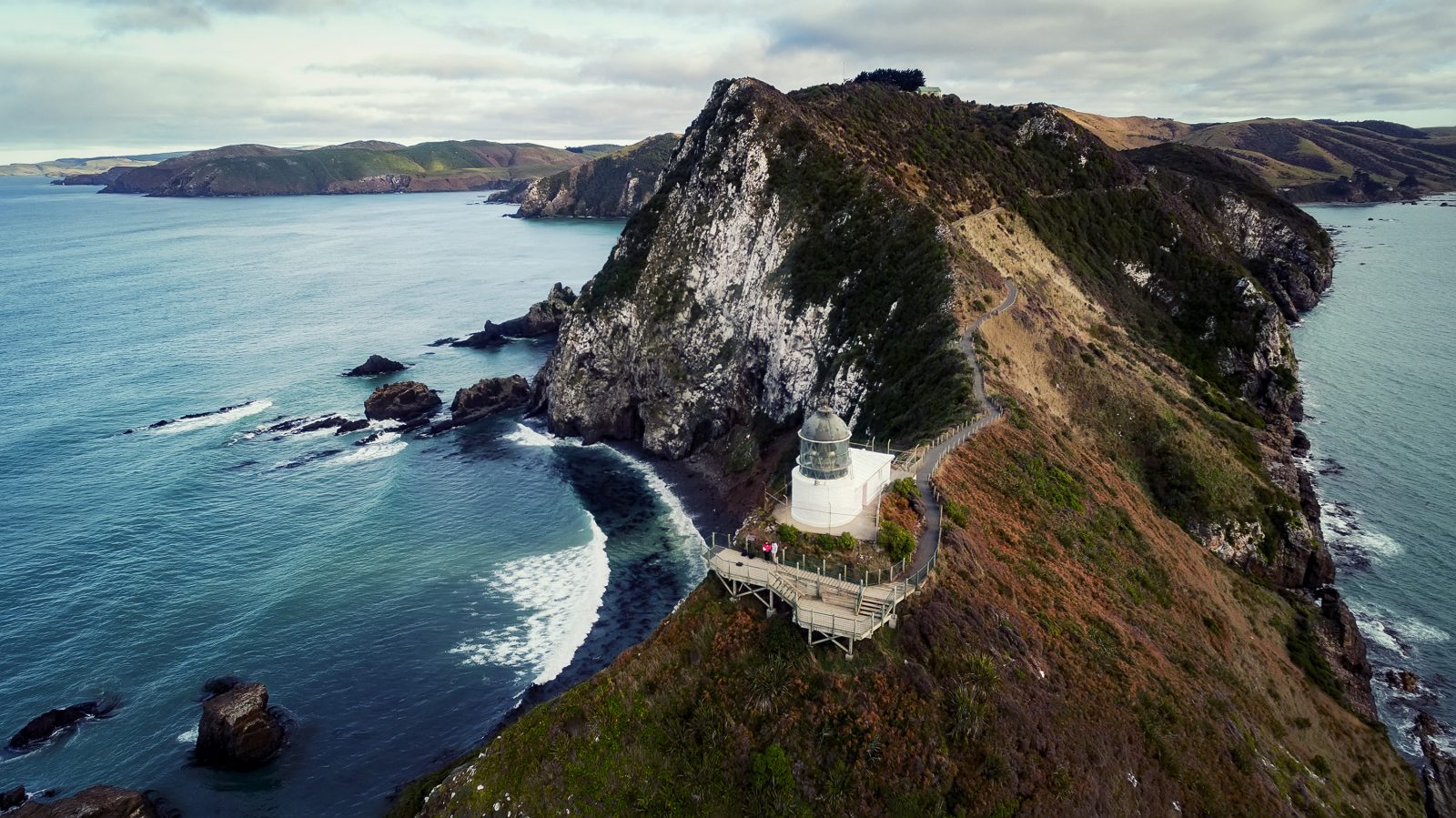
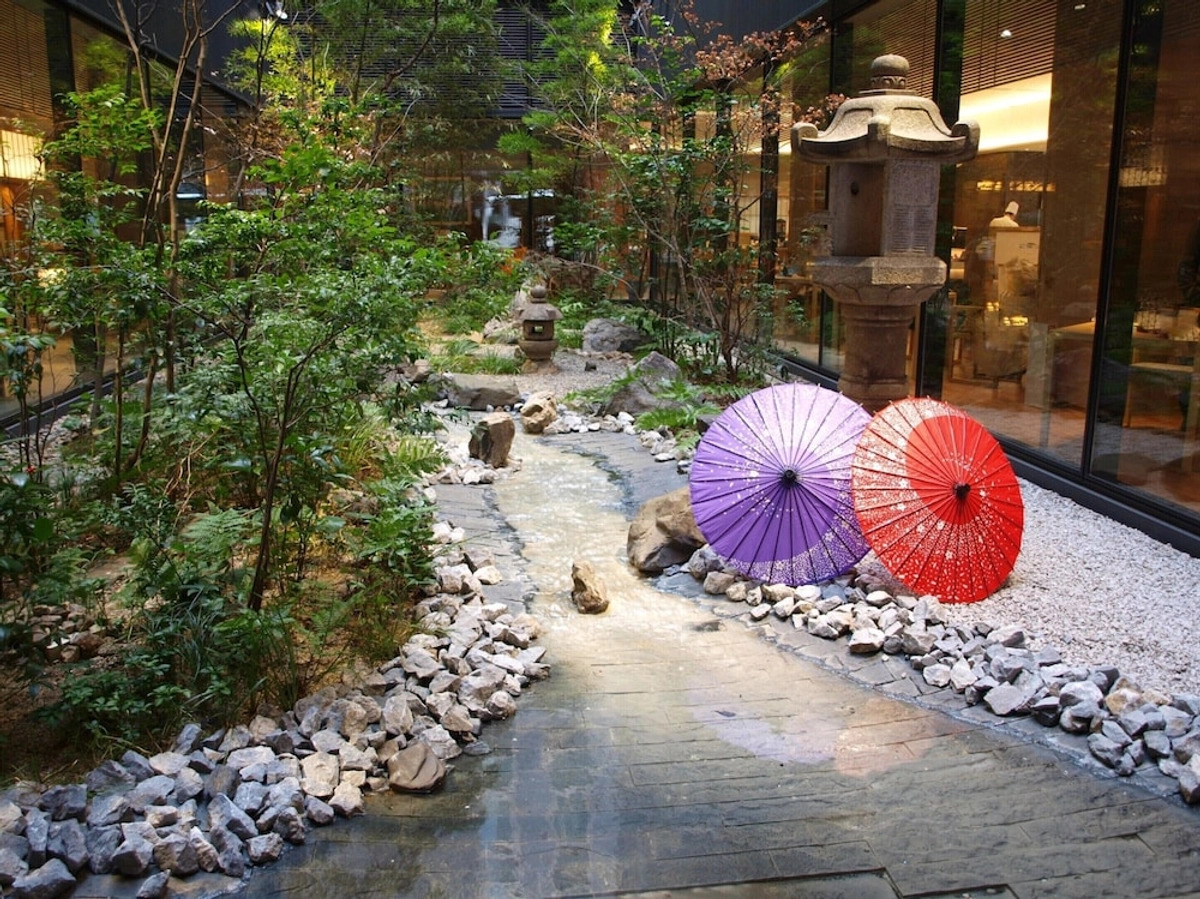



Recent Comments